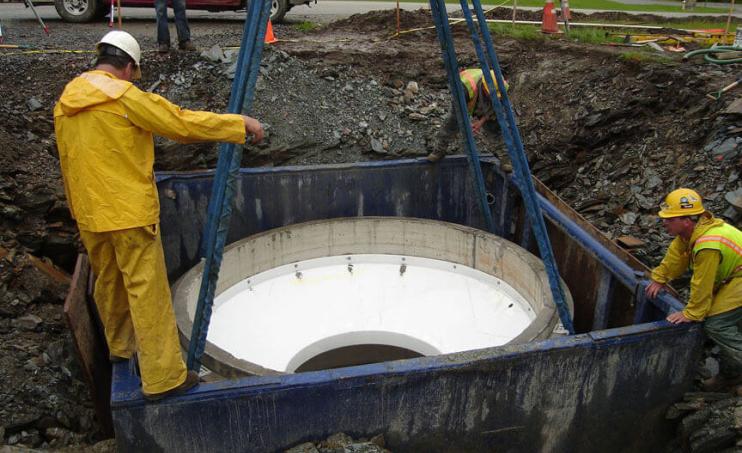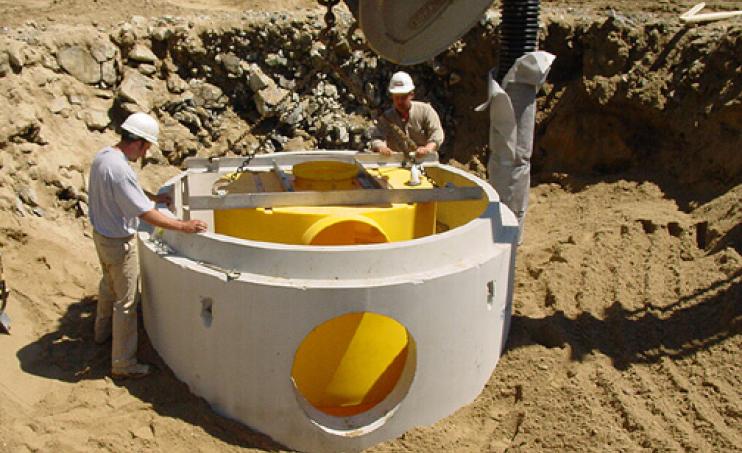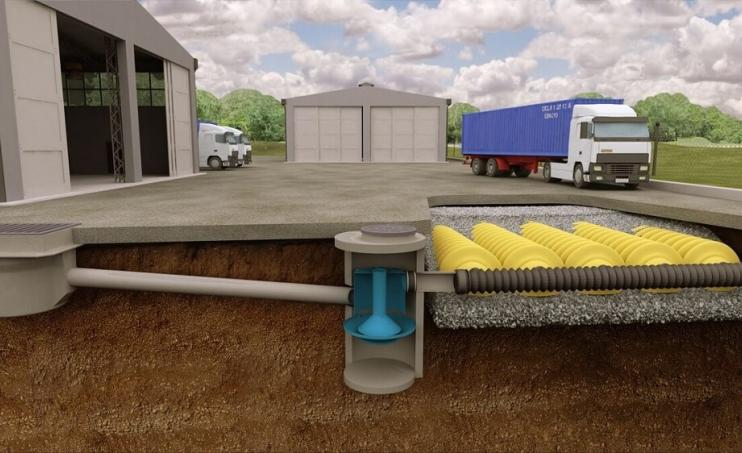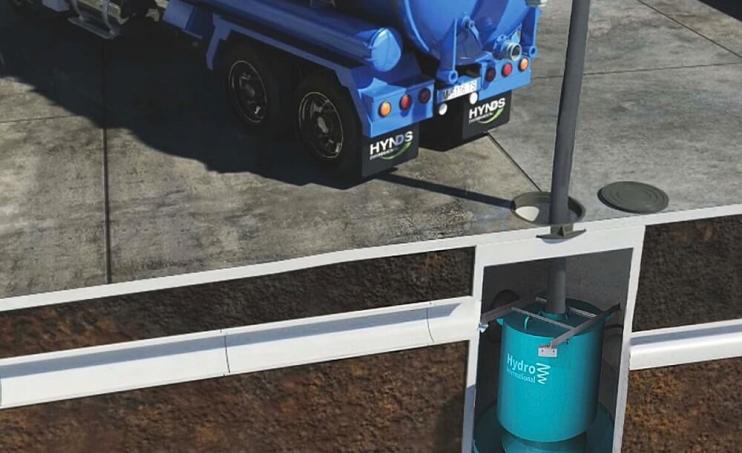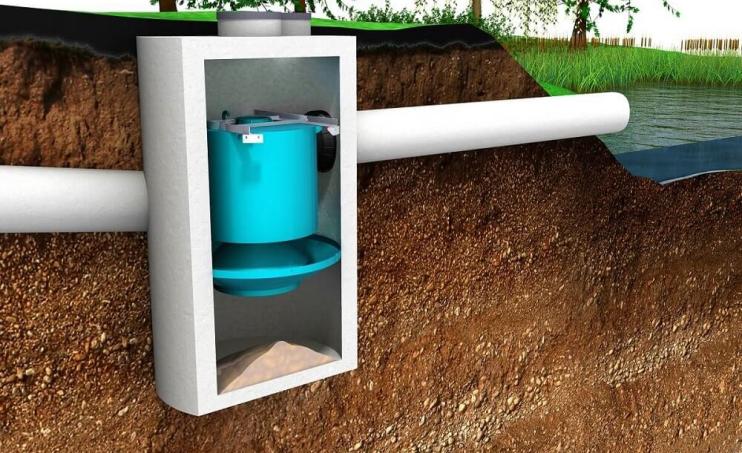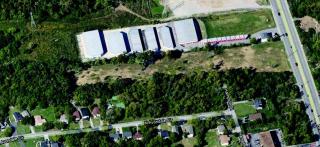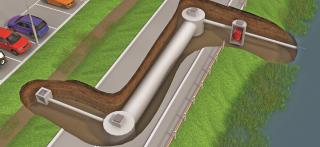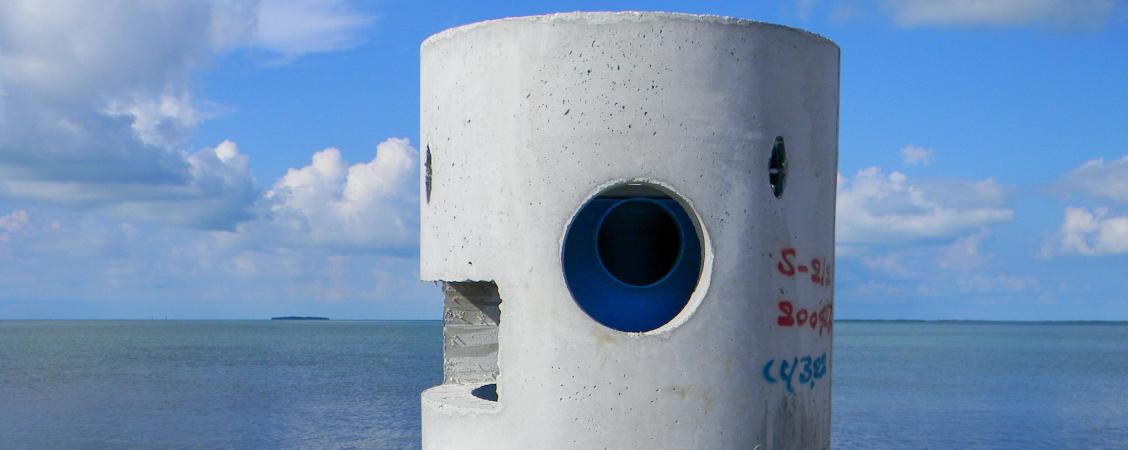
Downstream Defender
Download the brochureCapture and retain sediment, oils and floatables from stormwater runoff over a wide range of flows in a small footprint.
Downstream Defender® is an advanced hydrodynamic vortex separator that reliably captures and retains sediments, oil, trash and floatables from surface water runoff.
A compact, low-maintenance stormwater treatment BMP, the Downstream Defender® enables engineers to deliver effective pollutant removal at a single point in the drainage system.
The Downstream Defender® is an advanced hydrodynamic vortex separator that provides impressive and reliable removal of fine and coarse particles, hydrocarbons and floatable debris from surface water runoff, delivering high levels of stormwater treatment over a wide range of flow rates.
Available in a range of sizes, it can function as either pretreatment or as a stand-alone device, providing engineers and contractors with a flexible, cost-effective stormwater management option.
Targeted Pollutants:
- Fine and coarse particles / total suspended solids (TSS)
- Floatable trash and debris
- Liquid- and sediment-bound oils and hydrocarbons
- Sediment-bound heavy metals
- Sediment-bound nutrients
Applications:
The Downstream Defender® reliably treats surface water runoff from impermeable surfaces including highways, car parks, industrial areas and urban developments
- As part of green infrastructure, LID or LEED systems
- Areas where high solids and trash capture are a must
- Control of silting upstream of wetlands, ponds and basins
- Industrial stormwater pollution control
Certifications & Verifications:
- New Jersey Corporation for Advanced Technology (NJCAT)
- New Jersey Department of Environmental Protection (NJDEP)
- Environmental Technology Verification (ETV) Canada
- Washington State Technology Assessment Protocol - Ecology (TAPE) for Pretreatment
- Virginia Department of Ecology BMP Clearinghouse
- Ohio Department of Transportation
- St. Louis Metropolitan Sewer District
- California Water Boards Full Trash Capture
- Florida Department of Environmental Protection (Accepted)
Product Benefits
Save space and money
Downstream Defender® can treat high peak flows in as little as half of the footprint of other structural BMP systems. A smaller footprint means an easier install that's less expensive and requires less work.
The Downstream Defender® is proven to prevent washout of captured pollutants. Carefully designed internal components isolate the pollution storage areas, ensuring that what is captured is retained, even during high flows.
Adaptable
The Downstream Defender® can accommodate a change in outlet pipe direction to suit site-specific requirements.
Cut headloss
Low headloss means more site flexibility and provides engineers with design options for shallower sites.
The Downstream Defender® stormwater treatment system is designed to enhance vortex separation by minimizing turbulence and headloss, increasing efficiency, and preventing washout of stored pollutants.
1. Contaminated stormwater is introduced tangentially into the side of the vessel, generating a rotating flow that spirals around the outside of the dip plate.
2. Oils, trash and floatable debris rise to the water surface and are trapped in the oil and floatables storage volume.
3. As flow continues to spiral down around the dip plate cylinder, low energy vortex motion directs sediment inward along the benching skirt and into the protected sediment storage zone.
4. The benching skirt and center cone redirect the rotating flow up and inward between the center shaft and dip plate cylinder away from the stored sediment.
5. The outlet pipe discharges treated effluent from within the dip plate cylinder ensuring the longest possible residence time.
Peak treatment flow rate: 3.0 to 38.0 cfs (85 to 1,076 L/s)
Oil storage capacity: 70 to 1,770 gal (265 to 6,700 L)
Sediment storage capacity: 0.7 to 14.7 yd3 (0.53 to 11.24 m3)
Treated stormwater provides irrigation in urban improvement project
Downstream Defender® and Up-Flo® Filter help Monterrey to eliminate flooding and reuse treated stormwater to irrigate trees in a public…
Commercial development protects retention ponds
Downstream Defender® maintains the health and performance of retention ponds at a Nashville commercial development. Situation …
Neighborhood development prevents pollution of aquatic preserve
Downstream Defender® captures LID overflow pollution, providing environmental protection for a Florida aquatic preserve. Situation …
Does the Downstream Defender® need a pump?
No pump is needed. Based on simple hydraulics, the water level in the Downstream Defender® will fill to the invert of the outlet during the first storm without any assistance required from a pump.
Is the Downstream Defender® an oil collector?
Research has shown that up to 98% of hydrocarbon pollution in urban waters is attached to sediment particles. As the Downstream Defender® is specifically designed to remove sediment, it will also remove the attached hydrocarbons.
Why is there no internal bypass?
The standard Downstream Defender® models are designed to be 'online' units that treat the entire flow, so there is no internal bypass.
However, the Downstream Defender® can be designed 'offline' with an upstream bypass diversion structure.
Can the Downstream Defender® accept two inlet pipes?
What size of inlet and outlet pipe is acceptable?
Acceptable inlet/outlet pipe sizes range from 12" to 36" (300 to 900 mm), and vary by model size. Please refer to the Technical information section of the product page or contact us to discuss your requirements.

